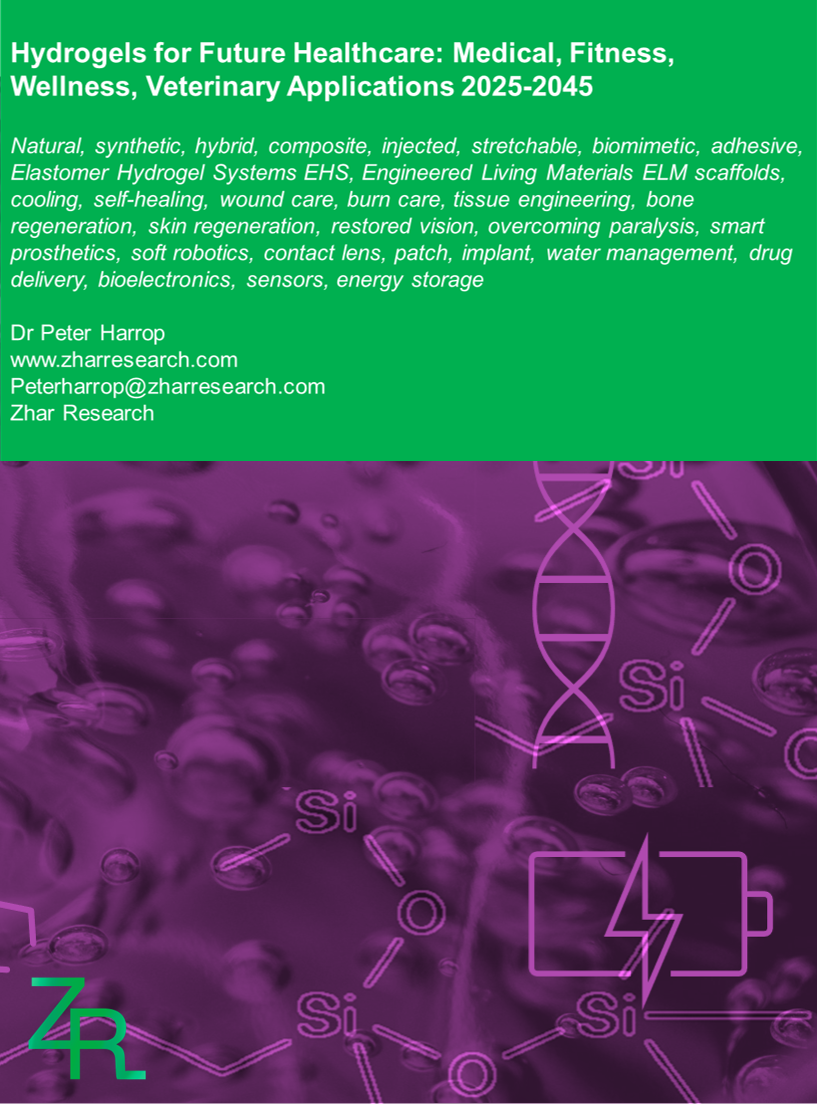Sample Pages

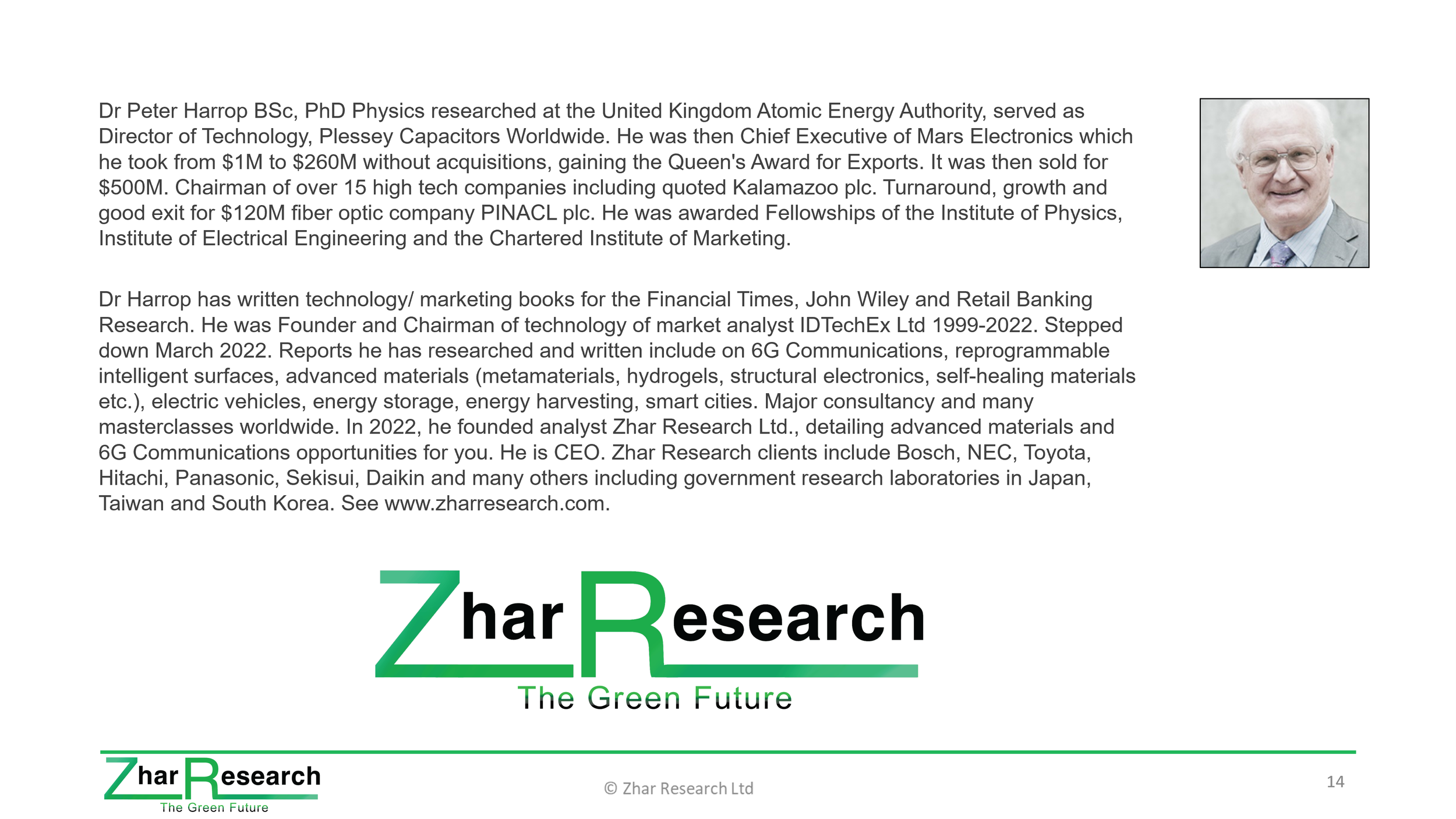
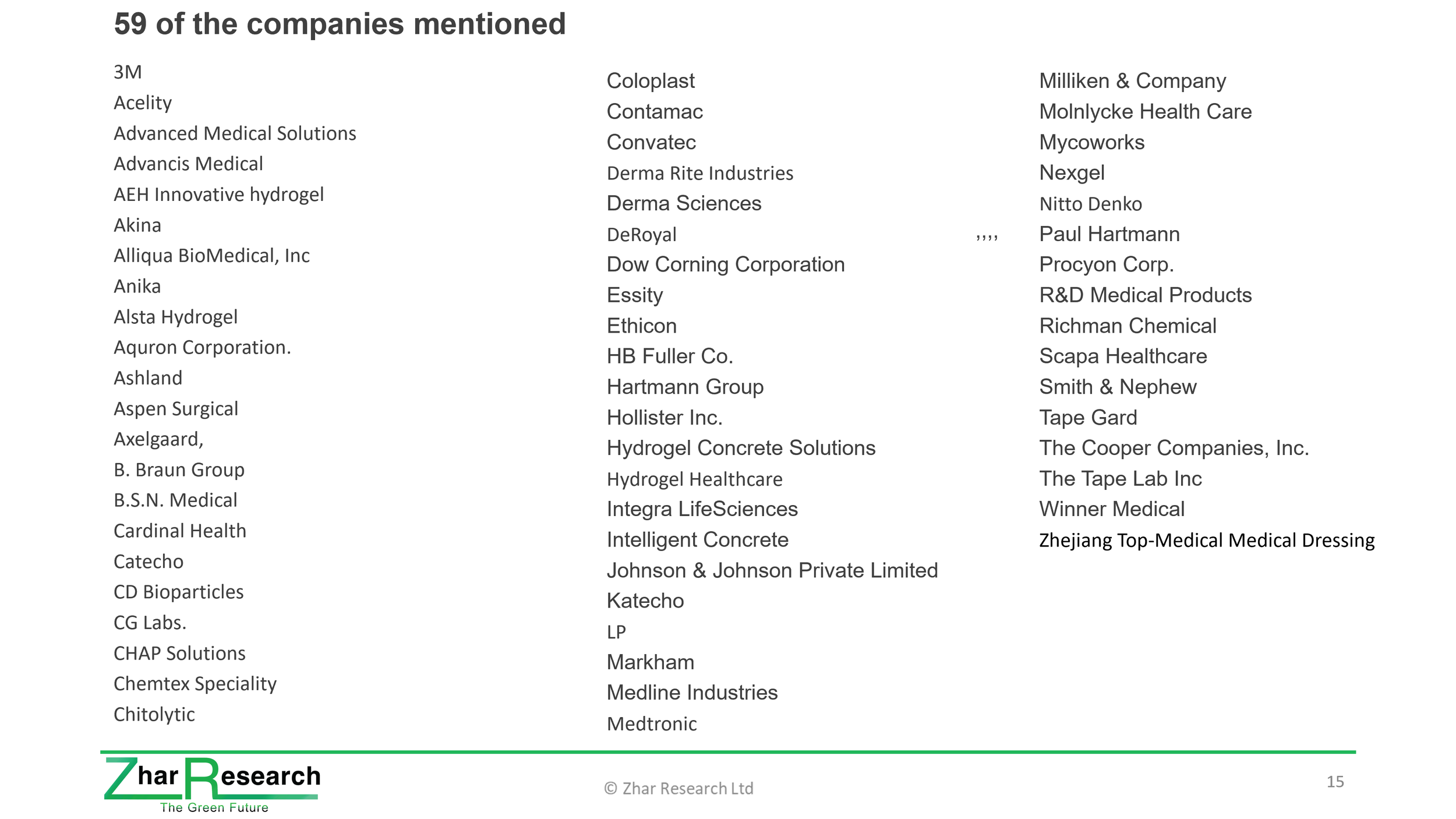
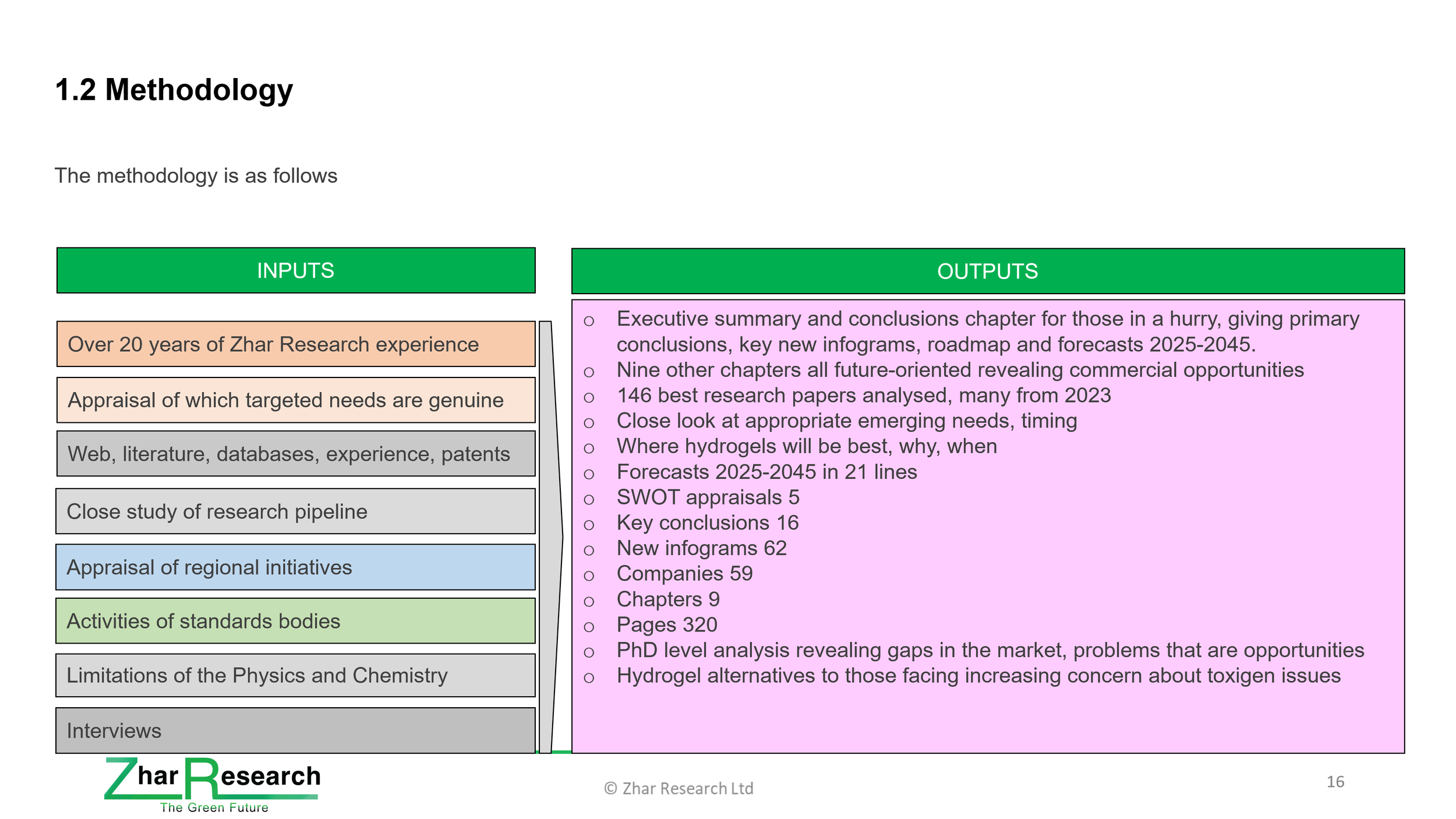

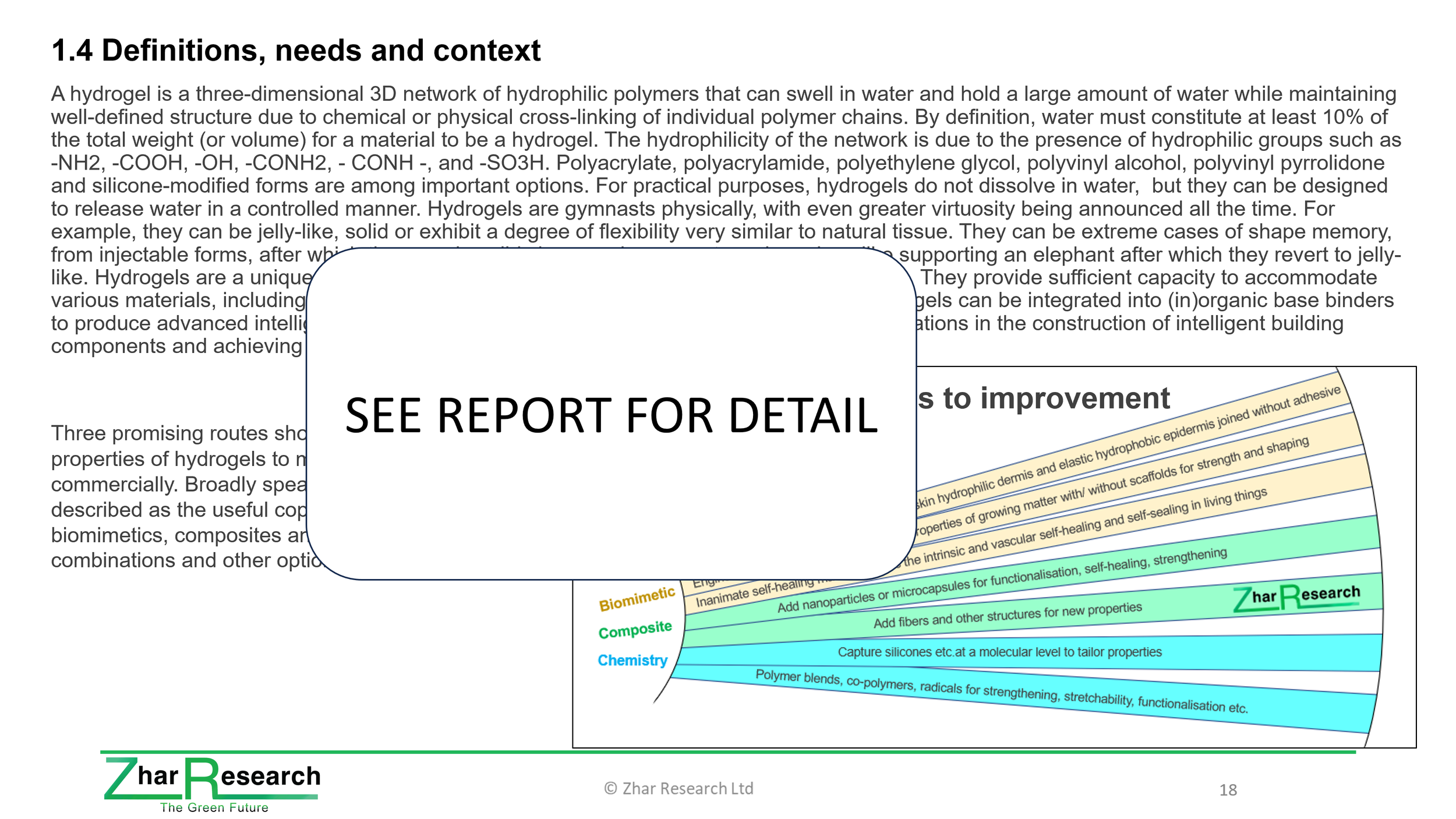
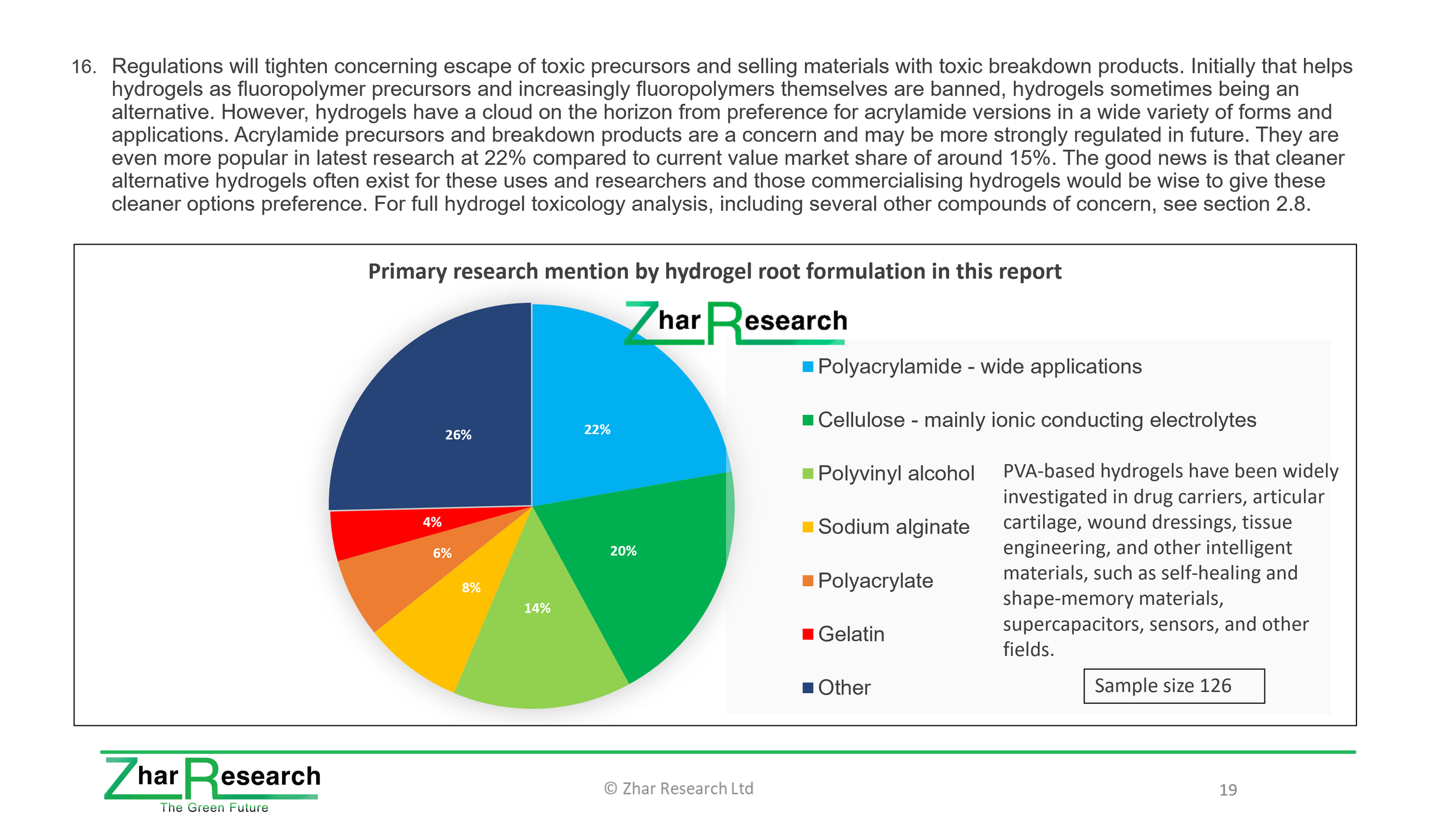
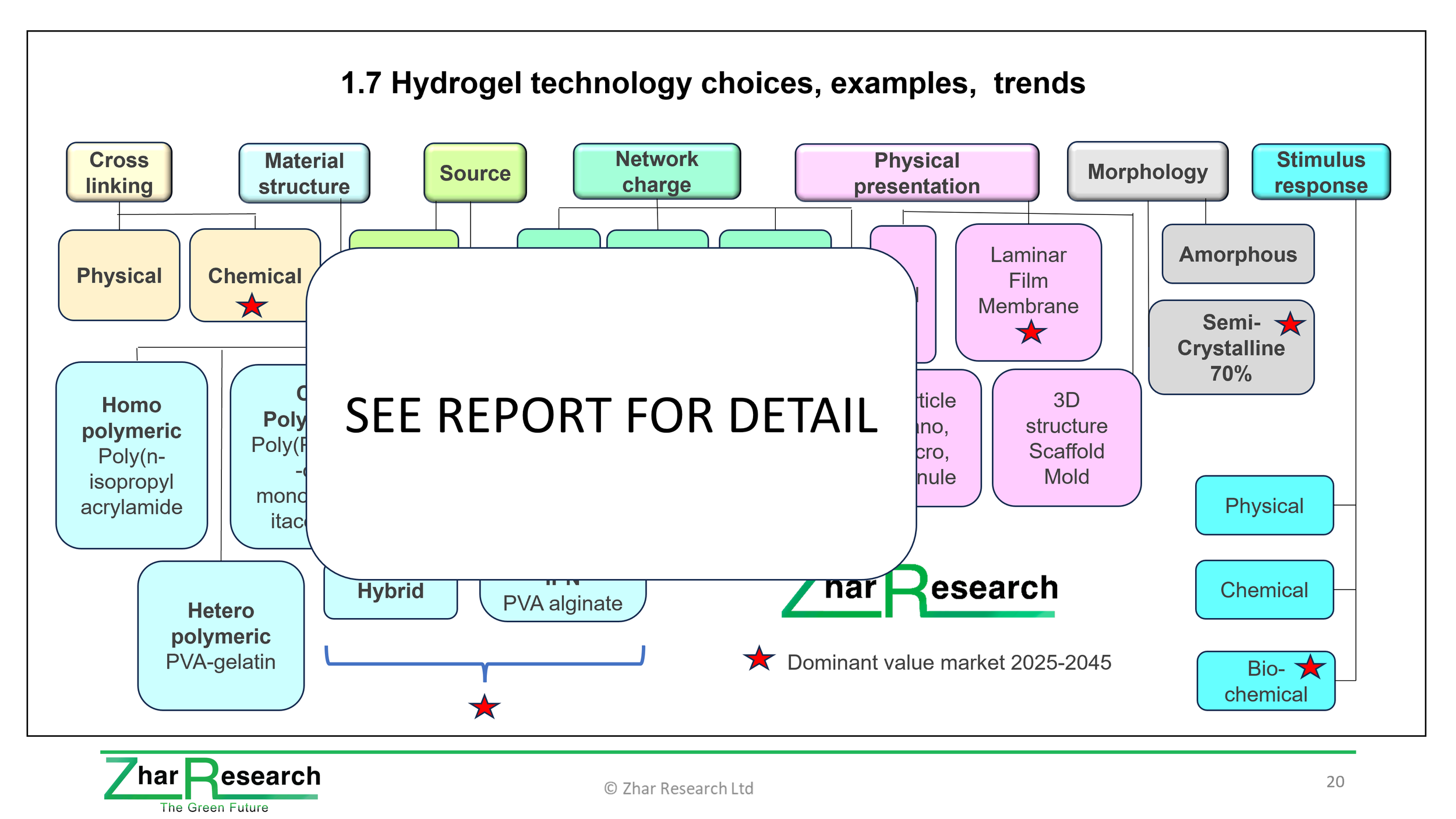

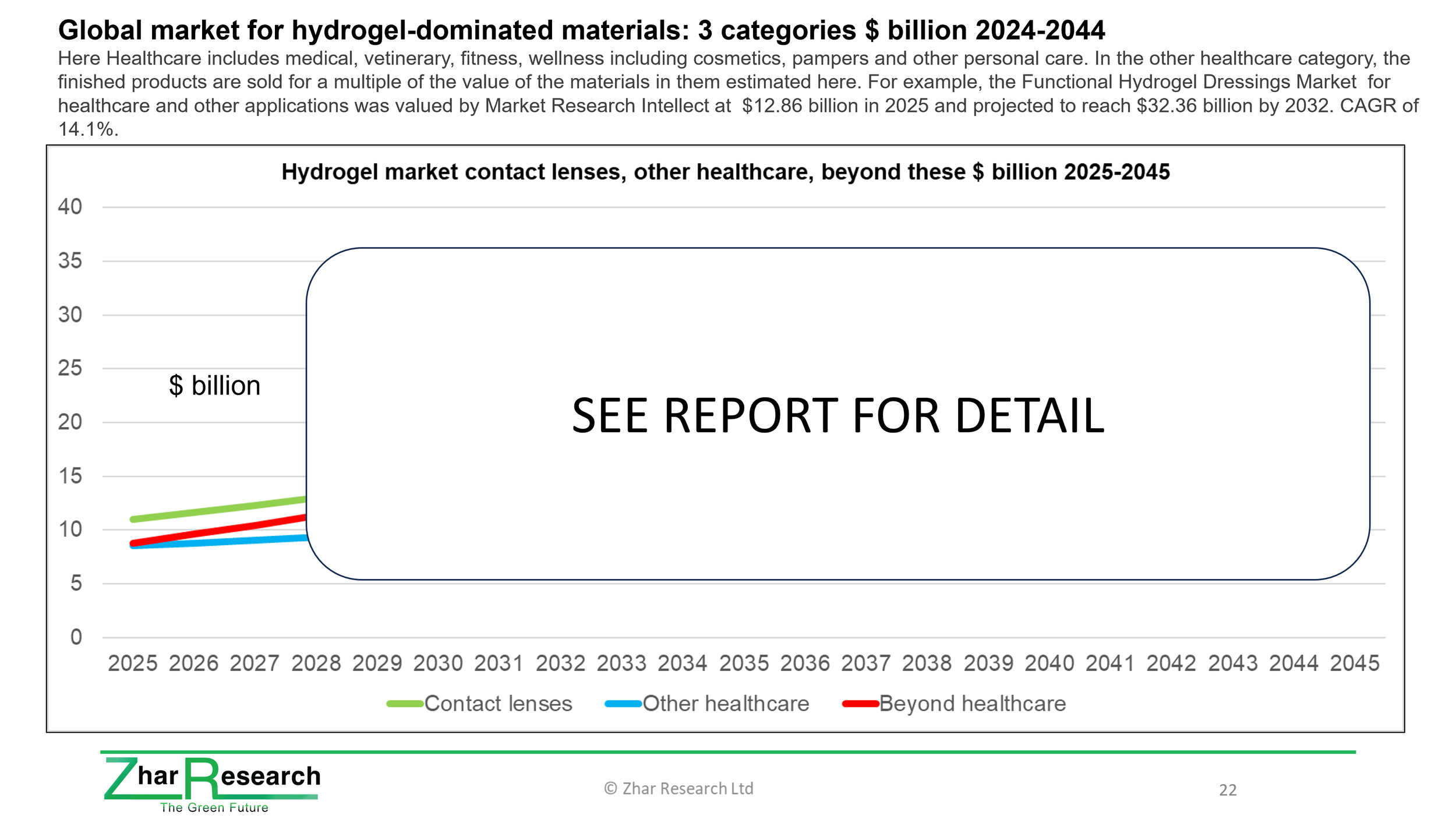
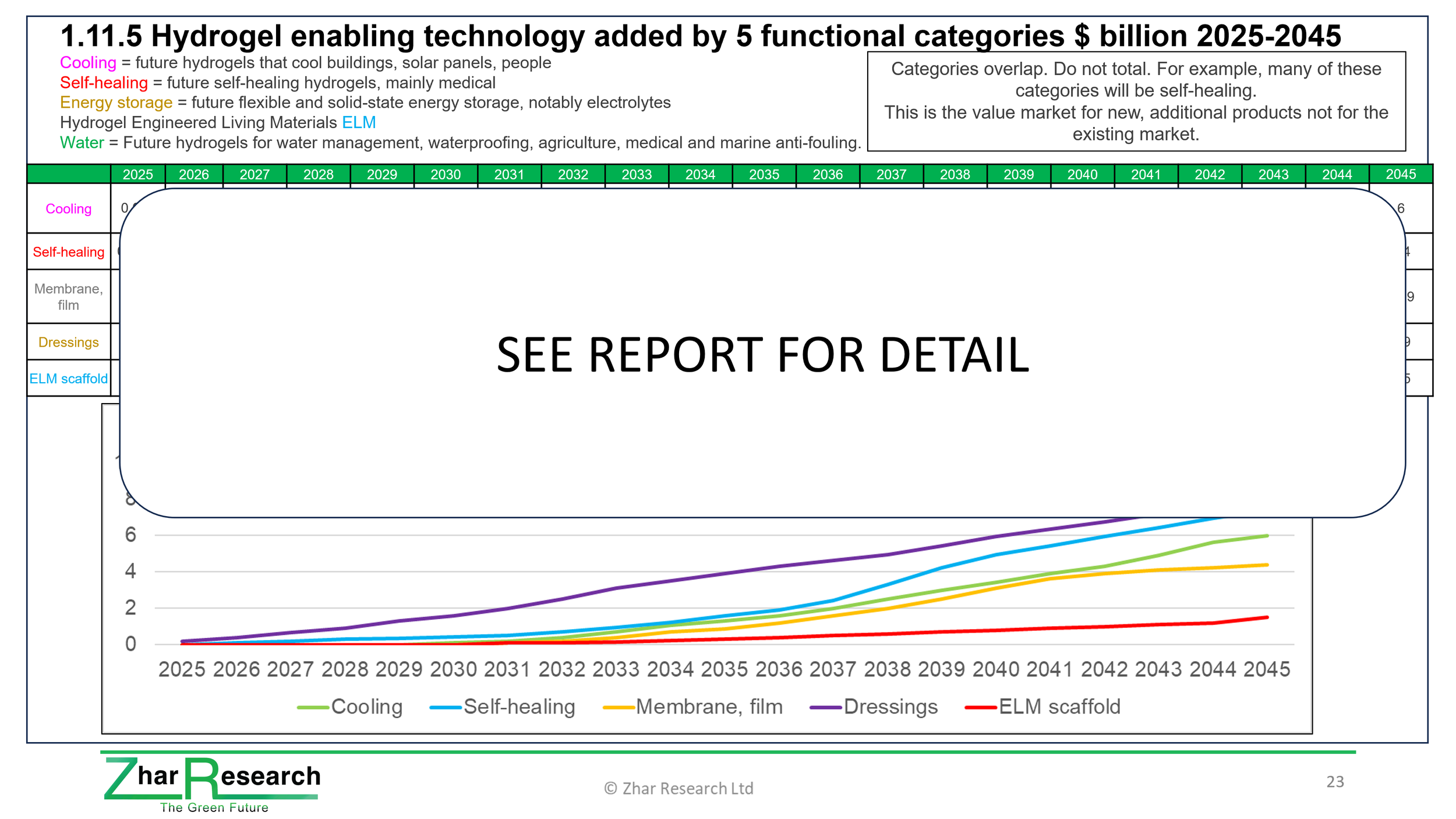
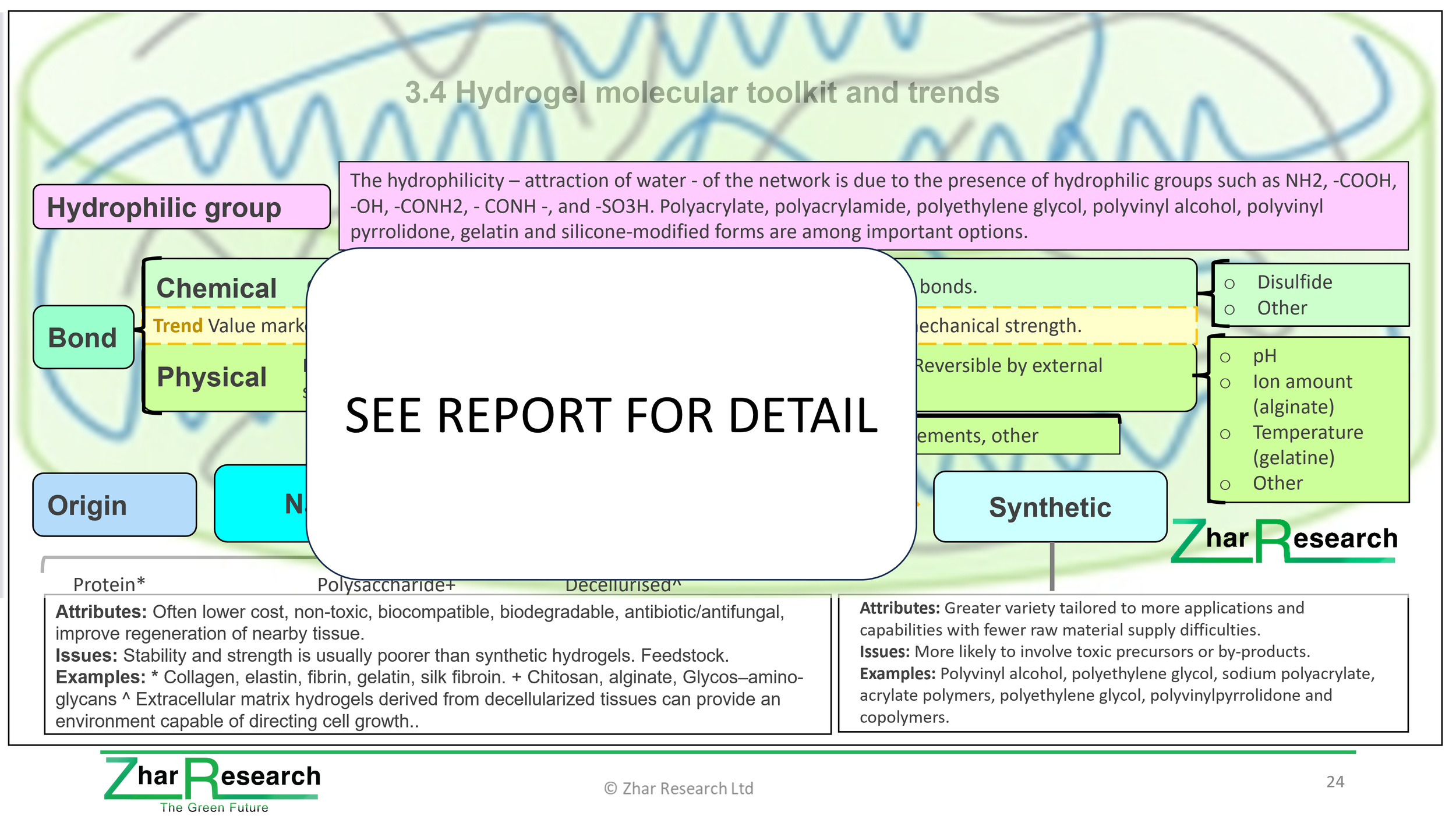
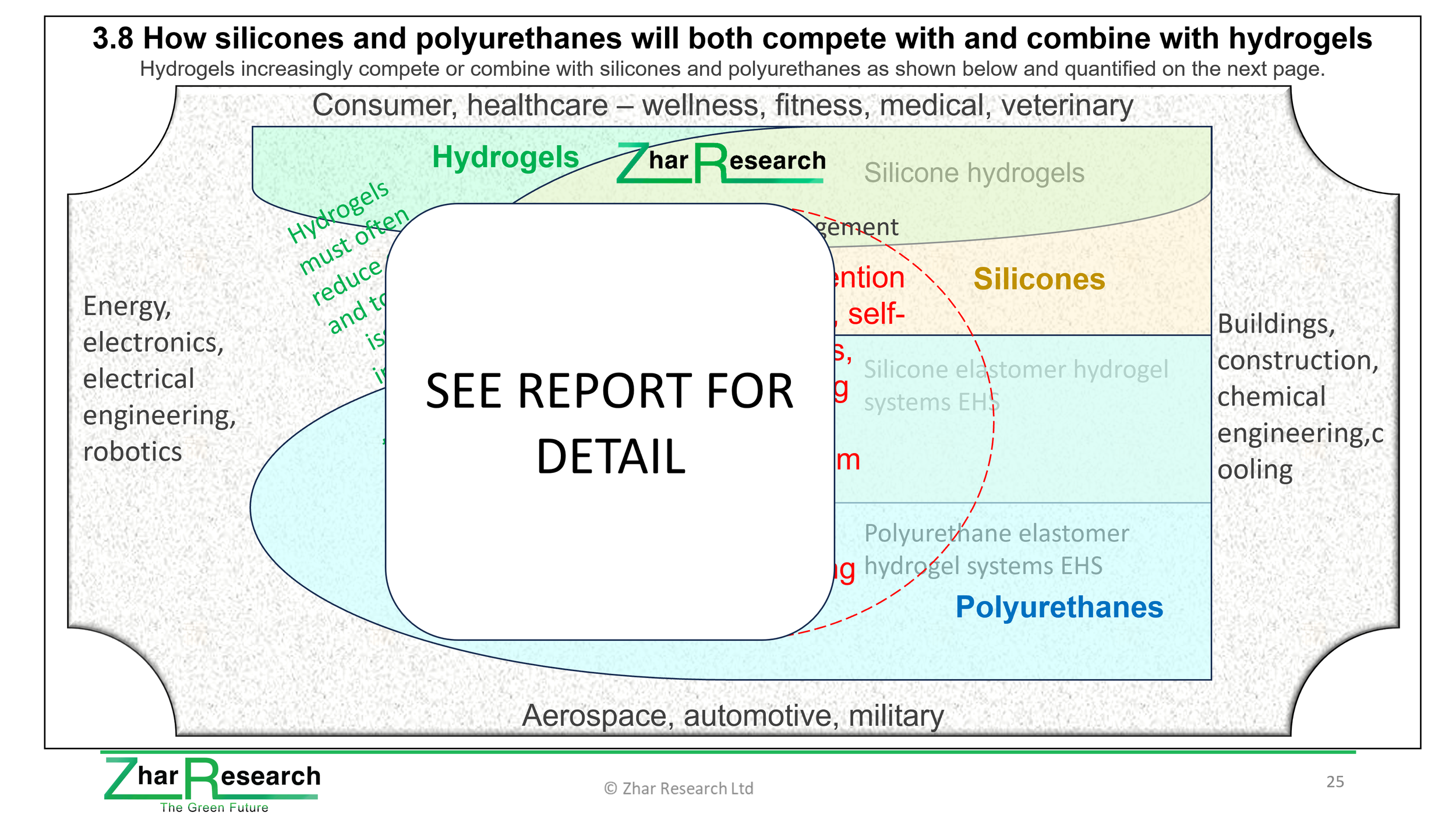
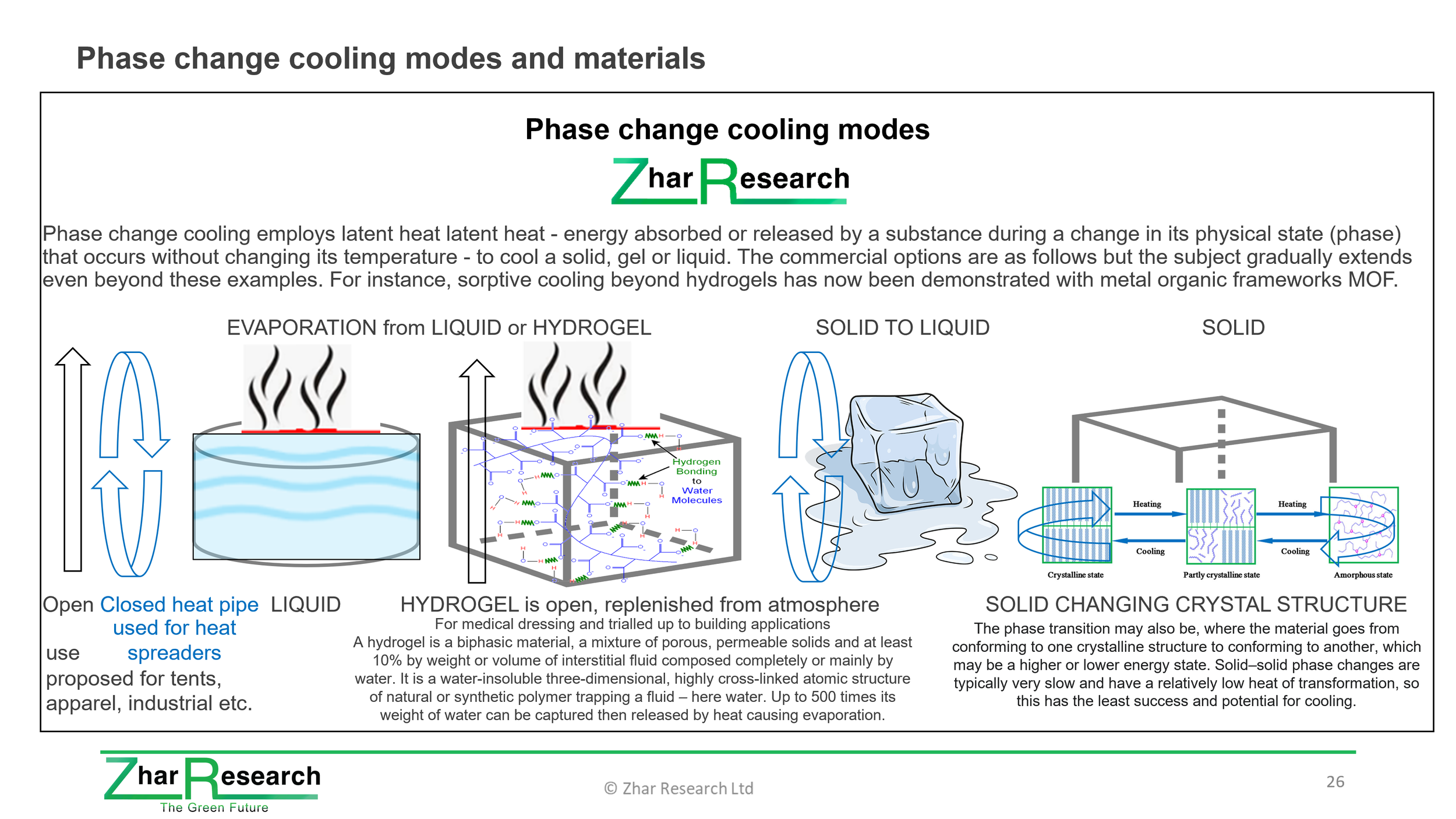
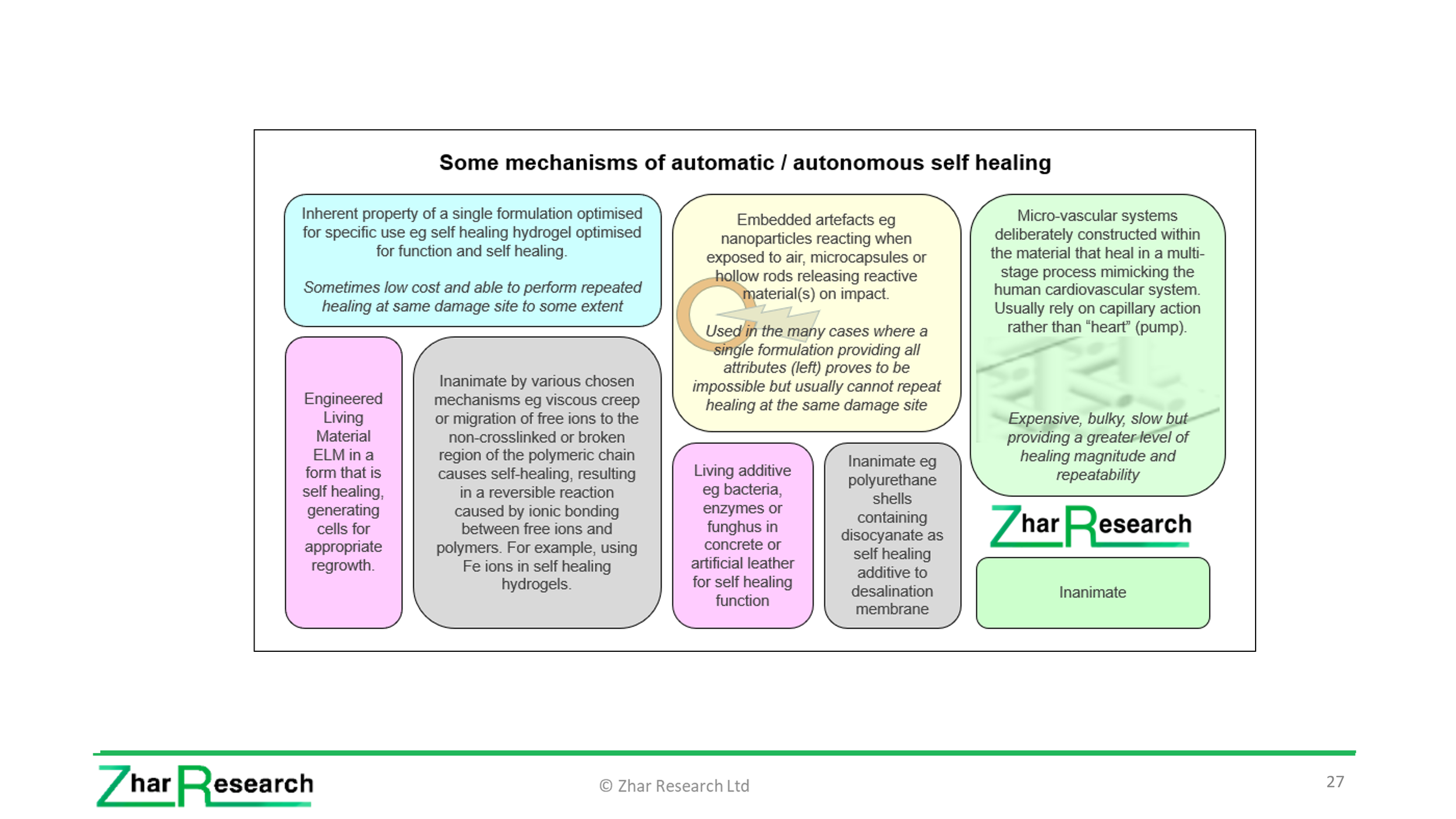
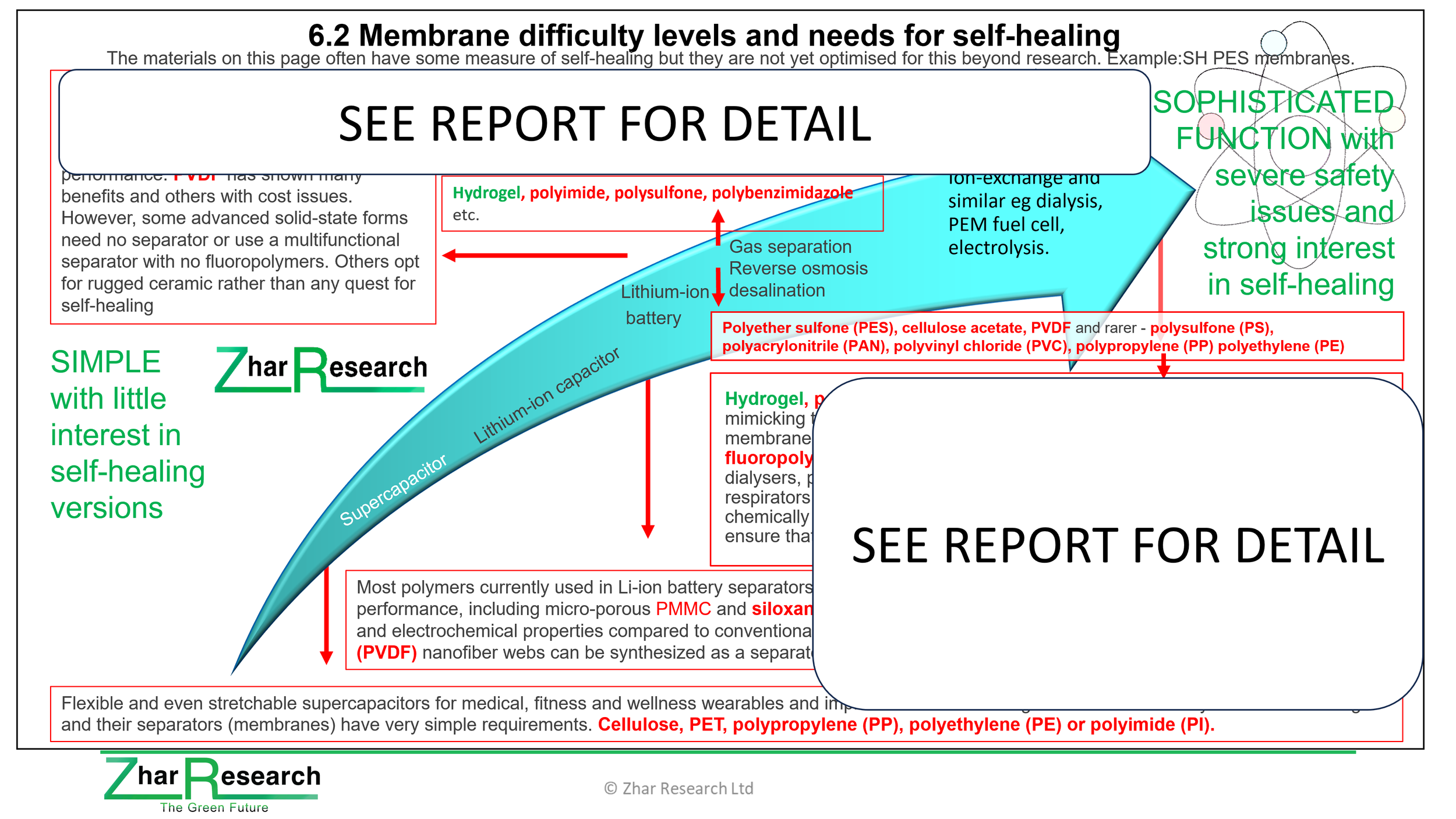
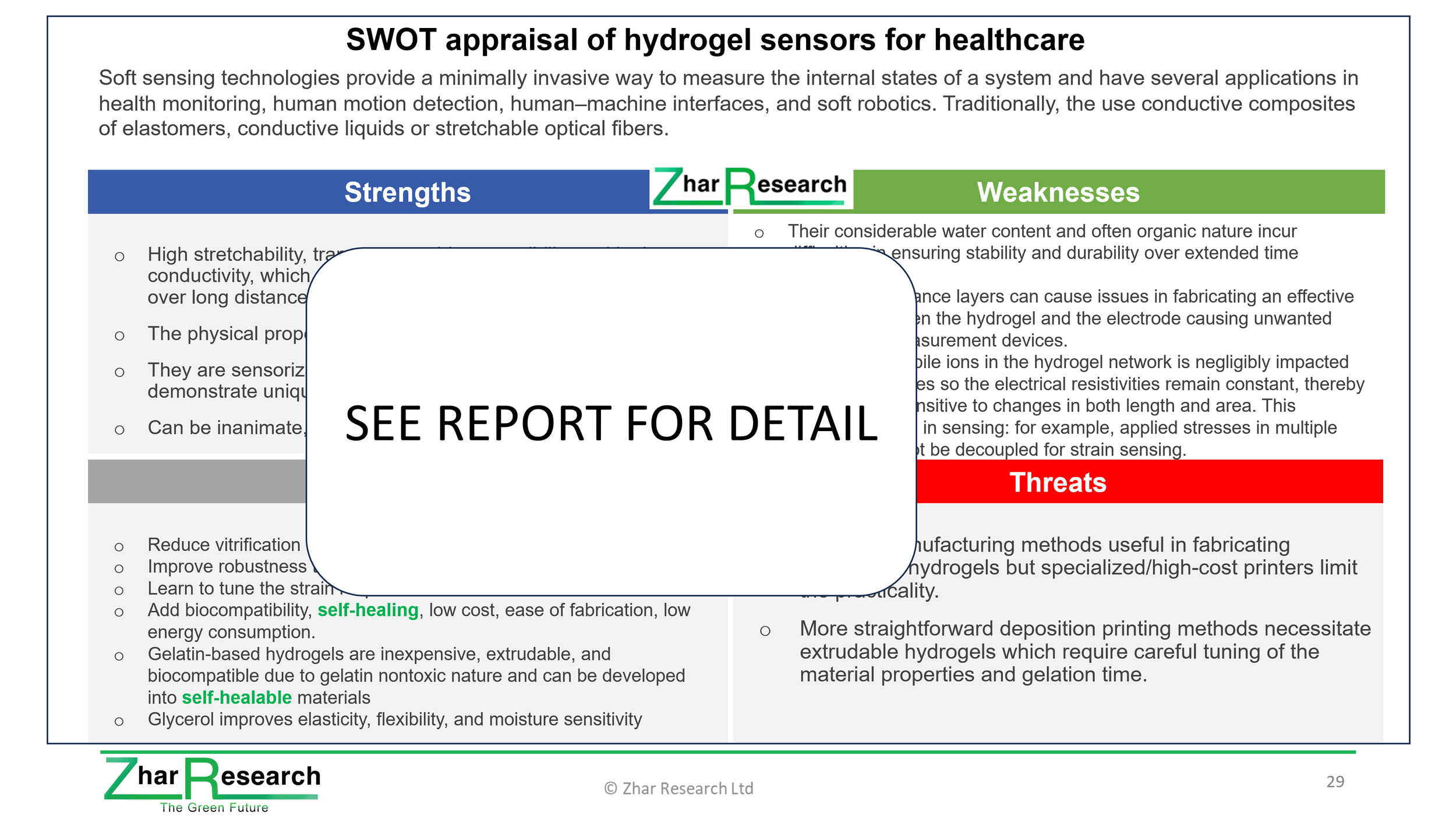
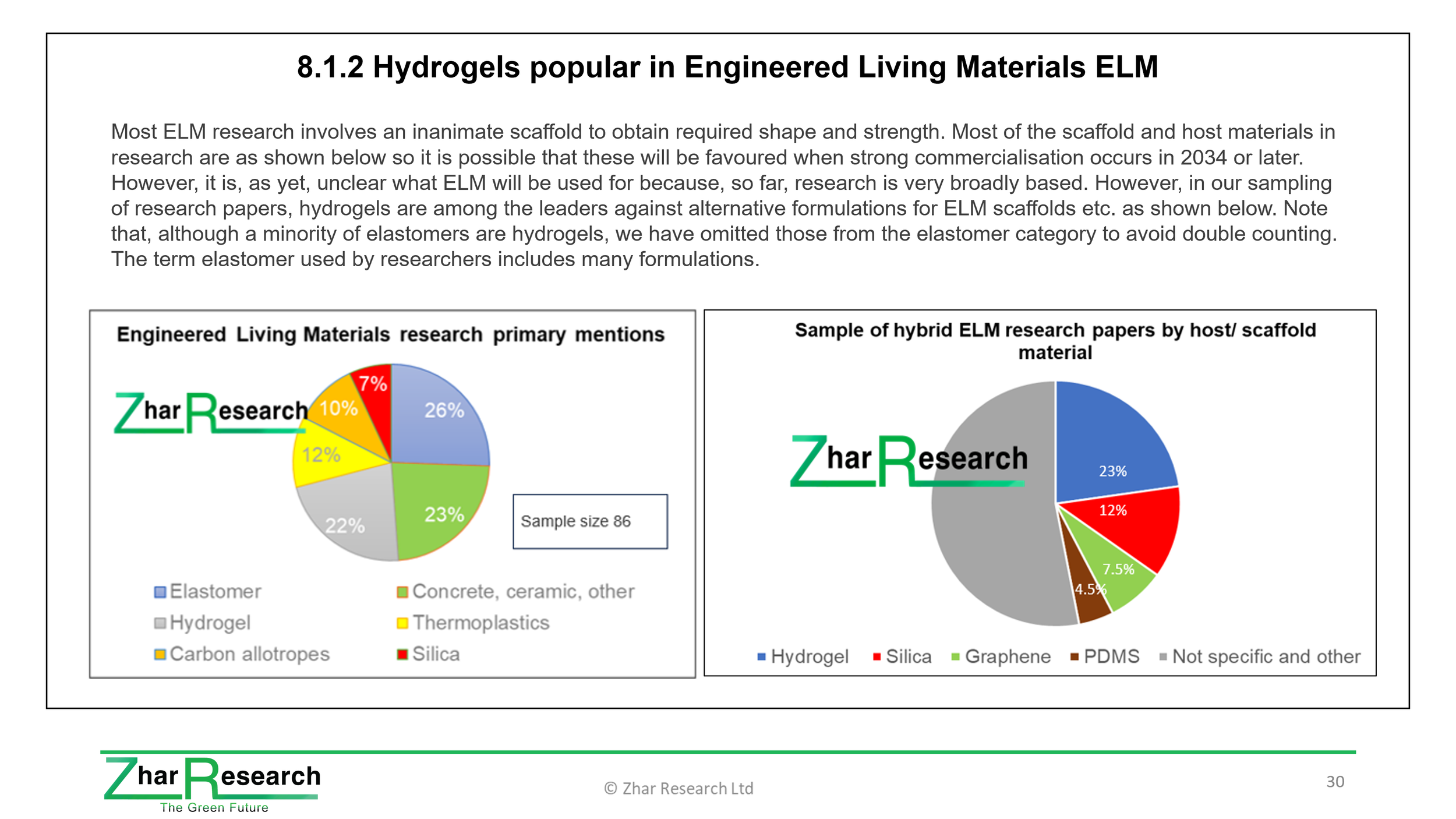
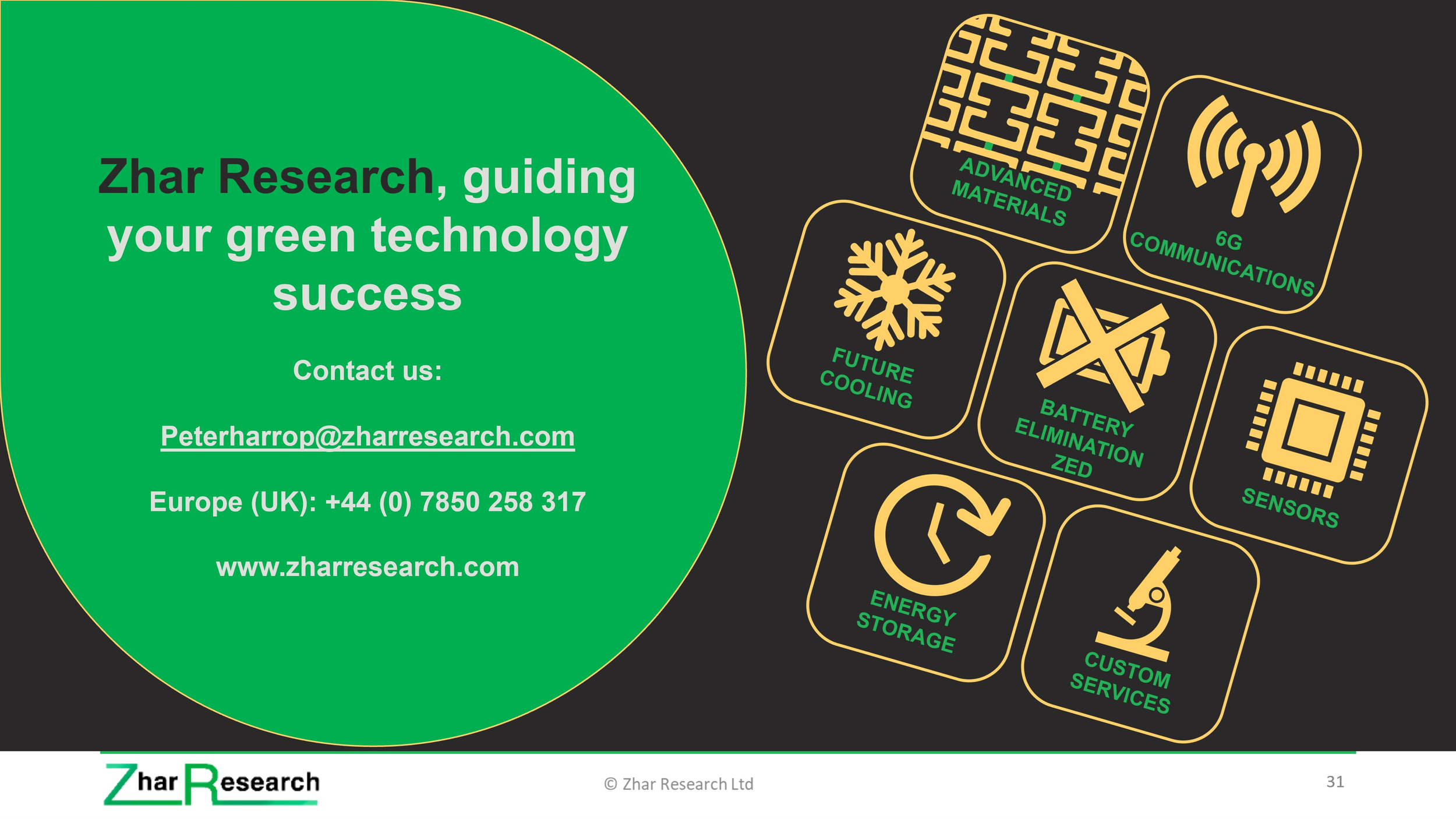
Contents List
-
1.1 Purpose and layout of this report
1.2 Methodology
1.3 Infogram: hydrogel market expansion across medical. fitness, wellness sectors 2025-2045
1.4 Definitions, needs and context
1.5 Sixteen primary conclusions
1.6 How hydrogel toxigens are an issue and an opportunity
1.7 Hydrogel technology choices, examples, trends
1.8 Analysis of recent research advances by material type
1.9 Hydrogel SWOT appraisal
1.10 Hydrogel roadmap 2025-2045 by industry sector
1.11 Market forecasts 2025-2045 in 21 lines
1.11.1 Healthcare hydrogel devices vs hydrogel materials market $ billion 2025-20451.11.2 Global market for hydrogel materials: 3 sectors and total $ billion 2025-2045
1.11.3 Four regions percentage of healthcare hydrogel material value market 2025-2045
1.11.4 Synthetic vs natural vs hybrid % of healthcare hydrogel material value market 2025-2045
1.11.5 Hydrogel enabling technology added by 5 functional categories $ billion 2025-2045
1.11.6 Global healthcare expenditure vs healthcare hydrogel device market $ billion 2025-2045
1.11.7 Solid-state cooling module market $ billion 2025-2045 -
2.1 Background
2.1.1 Long history and companies involved today
2.1.2 Many benefits
2.1.3 Market drivers
2.1.4 Contact lenses
2.2 Formulations for healthcare hydrogels with advances in 2025
2.2.1 Popular choices
2.2.2 Biomimetic approach is very useful: 2025 and earlier
2.3 Beware of the term gel
2.4 Limitations
2.5 Natural vs synthetic
2.6 How hydrogel toxigens are an issue
2.7 23 examples of medical hydrogel advances and applications
2.8 19 examples of other healthcare-related hydrogel applications in six sectors beyond medical
2.9 Wound healing advances in 20252.10 Evolving production technologies for hydrogels including 3D and 4D printing in 2025
-
3.1 Overview
3.2 Hydrogel SWOT appraisal – where we are now
3.3 Graphic of hydrogel market expansion across the landscape 2025-2045
3.4 Hydrogel molecular toolkit and trends
3.6 Six families of emerging hydrogel chemistry and functionality
3.7 Future hydrogel enabling technology by six other categories covered in later chapters
3.8 How silicones and polyurethanes will both compete with and combine with hydrogels
3.9 How other emerging materials compete with hydrogels in latest research
3.10 Most promising routes to improvement of hydrogels 2025-2045
3.10.1 Biomimetic, composite and chemistry3.10.2 Appraisal of important new medical research: wound healing, sensorised and rejuvenated skin, easing Crohn’s disease, restoring vision etc.
3.11 Elastomer Hydrogel Systems EHS
3.11.1 Basics3.11.2 Directly bonded or interphase
3.11.13 Earlier work advancing multifunction and other elastomer hydrogels
3.12 Hybrid hydrogels
3.13 Self-healing hydrogels with infograms and SWOT appraisal
-
4.1 Overview
4.2 Infogram: Major new cooling and thermal management needs arrive 2025-2045
4.3 Five infograms: The cooling toolkit and the hydrogel opportunity
4.4 Hydrogel evaporative cooling in general
4.4.1 Ambitions, limitations
4.4.3 Hydrogel open evaporative cooling
4.5 Future hydrogel technologies cooling of healthcare electronics, 6G telecommunications and solar panels
4.5.1 Hydrogel-silica aerogel
4.5.2 Thermogalvanic hydrogel for synchronous evaporative cooling
4.6 Hydrogel cooling of solar panels including gathering useful water
4.7 Imaginative new hydrogels in architectural cooling
4.7.1 Hydroceramic hydrogel cooling architectural structure
4.7.2 Hydrogel windows to block and store heat
4.8 Aerogel and hydrogel together cool pharmaceuticals etc.
4.9 Self-cooling smart actuator for soft robotics, prosthetics
4.10 Other cooling hydrogels relevant to healthcare challenges 2025-2045 -
5.1 Definitions and focus
5.2 Self-healing basics
5.2.1 Self- healing material market drivers
5.2.2 Intrinsic or extrinsic self-healing and value chain
5.2.3 Types of damage addressed with examples: skin, bone, drug delivery
5.2.4 The dilemma of metrics
5.3 Importance of self-healing hydrogels in engineering and healthcare
5.4 SWOT appraisal of self-healing materials in 2025
5.5 Technology options for self-healing hydrogels
5.5.1 Overview with wound-healing example
5.5.2 Physical self-healing in hydrogels
5.5.3 Chemical self-healing in hydrogels
5.6 Hydrogel competitive place against alternatives in actual and potential self-healing applications
5.7 Important examples in the research pipeline for 2025-2045
5.7.1 Anti-fouling, water-oil separation, liquid transportation
5.7.2 Bone regeneration
5.7.3 Drug-delivery and cancer therapy injectable hydrogels
5.7.4 Electrical conductors for electronics and medical purposes
5.7.5 Remote near-infrared-responsive controls
5.7.6 Self-lubricating water-based polymeric systems
5.7.7 Self-healing sensors
5.7.8 Solid state and other electrolytes
5.7.9 Spinal cord implants for treating paralysis
5.7.10 Soft robotics, smart prosthetics, bioelectronics, cartilage
5.7.11 Stretchable hydrogels for protein delivery etc.
5.7.12 Tissue engineering
5.7.13 Triboelectric and piezoelectric hydrogel nanogenerators
5.7.14 Adhesive hydrogels -
6.1 Overview
6.2 Membrane difficulty levels and needs for self-healing
6.3 Self-healing membrane chemistry in recent studies
6.4 Basics
6.5 Architectural and acoustic membranes
6.6 Battery, supercapacitor, fuel cell separators and electrolyte membrane
6.7 Electronic skin, e-skin for humans and robots
6.7.1 Overview
6.7.2 Hydrogel e-skin
6.8 Gas separation
6.8.1 Carbon dioxide
6.8.2 General
6.9 Ionic conductors
6.10 Ultrafiltration membrane -
7.1 Overview
7.1.1 Motivation
7.1.2 Chosen chemical routes: carbon, polymer, biopolymer, biomass
7.1.3 Biopolymer hydrogel routes
7.2 Flexible and solid-state energy storage examples
7.2.1 Zinc-air battery electrolyte
7.2.2 Supercapacitors, fuel cells and water electrolysers
7.2.3 Biopolymer-based hydrogel electrolytes
7.2.4 Supercapacitors
7.3 Magneto-responsive hydrogels for biotechnological and environmental applications
7.4 Sensors and sensing
7.5 Transistors
7.6 Thermal hydrogels for electronics -
8.1 Overview
8.1.1 Engineered Living Materials ELM with SWOT appraisal
8.1.2 Hydrogels popular in Engineered Living Materials ELM
8.1.3 Engineered Living Hydrogels ELH and their competition
8.1.4 ELM hype curve 2025-2045
8.1.5 Infogram: Some features of engineered living materials
8.2 Learning from nature
8.3 Typical features and materials
8.4 Taxonomy
8.5 Obstacles and the way forward
8.5.1 Obstacles
8.5.2 Bio ELM vs hybrid ELM
8.5.3 Examples of specific approaches
8.6 Examples of living material in ELM research
8.6.1 Funghi - mycelial materials
8.6.2 Bacterial
8.6.3 Other examples of self-healing ELM research
8.6.4 Further reading -
9.1 Overview
9.2 Concrete and other cementitious materials
9.2.1 Inducing hydrogel in concrete
9.2.2 Aquron and Markham New Zealand
9.2.3 Hydrogel Concrete Solutions Australia
9.2.4 Intelligent Concrete USA
9.2.5 Polyacrylic hydrogel in cement composites
9.2.6 Hydrogels containing nanosilica enhance cement pastes
9.2.7 Improved concrete using hydrogel-based internal curing agents
9.3 Safe drinking water using hydrogels
9.4 Hydrogels and alternatives extracting useful water from the air
9.4.1 Metal oxide frameworks competing with hydrogels
9.4.2 Water harvesting even while warming
9.5 Precious metal recovery with reusable hydrogel
Longevity, quality of life
Many of our grandchildren may live to 120 years and have a far better quality of life due to latest heroic achievements with hydrogels. A unique new Zhar Research report looks deeply into latest 2025 research and its interviews with PhD level analysis and forecasting, revealing your opportunities, potential partners and competition for both the materials and devices emerging. It is commercially oriented, 320-page, “Hydrogels for Future Healthcare: Medical, Fitness, Wellness, Veterinary Applications 2025-2045”.
Two parallel trends
Primary author, Dr Peter Harrop says, “Two parallel trends drive robust growth of the healthcare hydrogel market from $37 billion in 2025 to $154 billion in 2045. The mature products such as pads, diapers and contact lenses will be adopted by emerging countries. Advanced countries will eagerly adopt new advances enabling the paralysed to function, the blind to see, failed organs to be replaced and much more. New inanimate hydrogels are rapidly arriving to achieve this, including composites, hybrid natural/ synthetic and multipurpose hydrogels but later years will even see hydrogel scaffolds for Engineered Living Materials employed in surgery.”
Complete summary
The Executive Summary and Conclusions (36-pages) is enough for those in a hurry, for here are the 16 primary conclusions, the emerging technologies and market dynamics in detailed new infograms, 21 forecast lines and roadmap 2025-2045. See problems that are your opportunities such as replacing toxigen intermediaries.
Deep analysis for materials and hardware suppliers
The Introduction (22 pages) briefly gives the long history and companies involved today then more detail on the many benefits, market drivers and formulations for healthcare hydrogels with advances in 2025. What are currently the popular choices and why is the biomimetic approach very useful? Why should we be beware of the term gel and recognise many toxigen and performance limitations of current hydrogels? See 23 examples of medical hydrogel advances and applications and 19 examples of other healthcare-related hydrogel applications in six sectors beyond medical. Other topics introduced are natural vs synthetic, wound healing advances in 2025 and evolving production technologies for hydrogels including 3D and 4D printing in 2025.
Comprehensive toolkit emerging with examples of medical achievements
Chapter 3. Hydrogel Toolkit for Healthcare 2025-2045 (30 detailed pages) to explain all this in detail including six families of hydrogel chemistry and functionality and subsets such as Elastomer Hydrogel Systems EHS. Commercial emphasis is enhanced by some latest research advances in wound healing, sensorised and rejuvenated skin, easing Crohn’s disease, and restoring vision, with Zhar Research analysis.
Healthcare cooling hydrogels
Chapter 4. Future Hydrogels that Cool: Pharmaceutical, Prosthetic, Therapeutic, other (33 pages) appraises this commercially important aspect. Six infograms display major new cooling and thermal management needs arriving 2025-2045, the cooling toolkit and the hydrogel opportunity. Understand hydrogel evaporative cooling in general with ambitions, limitations. What about future hydrogel technologies, even cooling of healthcare electronics, use of hydrogel-silica aerogel, thermogalvanic hydrogel for synchronous evaporative cooling and latest 2025 research advances? Healthcare facilities may employ hydrogel windows to block and store heat, use aerogel and hydrogel together cool pharmaceuticals. Expect self-cooling smart actuators for soft robotics and prosthetics and learn other cooling hydrogels relevant to healthcare challenges 2025-2045.
Healthcare self-healing hydrogels and more
Chapter 5. Future Healthcare Hydrogels in Action, Including Self-healing Function, with 81 pages, looks more generally at the future applications, mostly revealing the great importance of self-healing hydrogels. Understand the science of intrinsic and extrinsic self-healing and the value chain. See types of damage addressed with examples such as skin, bone regeneration, wound healing, cancer therapy and drug delivery with hydrogels, including injectables, but the dilemma of metrics for self-healing and the benefits of alternatives. A SWOT appraisal is followed by important examples in the research pipeline for 2025-2045. Self-healing healthcare electronics, sensors and nanogenerators for smart patches and implants is covered. Then comes research success with spinal cord implants for treating paralysis, soft robotics, smart prosthetics, bioelectronics and cartilage, stretchable hydrogels for protein delivery, tissue engineering, adding the impact of adhesive and self-lubricating hydrogels.
Membrane, skin, film, ELM hydrogels emerging
Chapter 6. Future Hydrogel Membranes, Skin and Film: Ion-exchange, Gas separation, Other (19 pages) expands on these aspects with detailed tabular comparisons and many research advances from 2025. Zhar Research finds that almost all the market potential for healthcare hydrogels will involve inanimate forms, increasingly synthetic for tailoring to purpose but Engineered Living Material may get commercialised late in the 2025-2045 timeframe with hydrogels favourite as scaffolds on which the living material is grown for therapy on and later in humans but in competition with entirely inanimate hydrogel solutions to the same challenges. All that is covered in Chapter 8. Engineered Living Materials ELM Using or Competing with Hydrogels (29 pages). However, understand why the level of research is not increasing. The report then ends with the more peripheral topic in Chapter 9. Future Hydrogel Materials in Healthcare Infrastructure and Water Management with companies, technologies and progress involved. In the whole report, 59 companies are mentioned.
Essential reading
The latest information and in-depth analysis is essential to aid your participation in commercial healthcare hydrogels. The report, “Hydrogels for Future Healthcare: Medical, Fitness, Wellness, Veterinary Applications 2025-2045” is your essential source.

